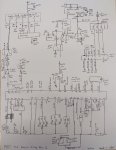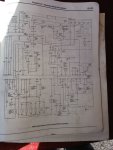Alexander
New Member
- Joined
- Oct 10, 2023
- Messages
- 4
- Reaction score
- 2
- Points
- 3
- Location
- Ny
- Vehicle Year
- 1987
- Make / Model
- Ford Ranger
I currently have a 1987 Ford Ranger with a 2.3 straight 4, EFI and 5 speed Manual, RWD. The engine started leaking oil bad and needed to be rebuilt, but I have a 1991 Ford Ranger with a 4.0 V6 EFI 5 speed Manual RWD, with a snapped Frame. I still need to test the 4.0 to be sure it's performing well. But I was curious if a swap was more worthwhile than a engine rebuild? Since I'd get more horsepower and torque out of it, at the cost of gas mileage of course. Also I was curious bout how to do the swap?
I was considering swapping the 2.3 for the 4.0. I'm not exactly sure how to do this. I think I'll need to swap the engine mounts, the Exhaust Piping, the ECM module and the fuel Rail System. And I was curious if the Transmission on my 2.3 will bolt up to a 4.0 or if I need to use the 4.0 transmission. If I do use the 4.0 Transmission do I need to swap the Rear Differential too? Can I just swap the ECM and plug and play or do I need to rewire and/or Flash some of the components? And what other issues would I run into doing this swap?
I was considering swapping the 2.3 for the 4.0. I'm not exactly sure how to do this. I think I'll need to swap the engine mounts, the Exhaust Piping, the ECM module and the fuel Rail System. And I was curious if the Transmission on my 2.3 will bolt up to a 4.0 or if I need to use the 4.0 transmission. If I do use the 4.0 Transmission do I need to swap the Rear Differential too? Can I just swap the ECM and plug and play or do I need to rewire and/or Flash some of the components? And what other issues would I run into doing this swap?

















